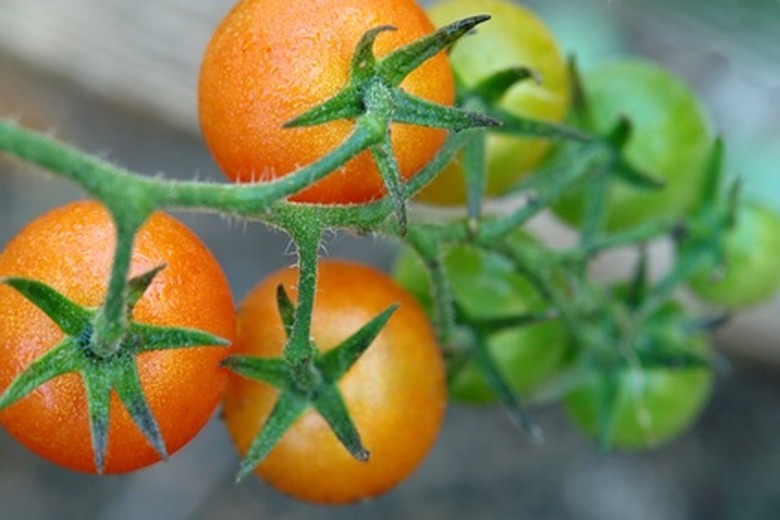The Usage Of Epsom Salt & Ammonia In Tomato Gardening
Tomatoes are among the most rewarding vegetables for a home gardener to grow. They taste infinitely better than their grocery store counterparts and require only a little help from you. To boost their growth, flowering and fruit production, try a couple of inexpensive home remedies–Epsom salt and ammonia. Epsom salt is magnesium sulfate. Magnesium is a nutrient needed for adequate plant growth. It is quickly depleted and often almost absent in Western United States gardens. Ammonia, according to the International Ag Labs, is a natural fertilizer that aids flowering and tomato setting.
Tomatoes are among the most rewarding vegetables for a home gardener to grow. They taste infinitely better than their grocery store counterparts and require only a little help from you. To boost their growth, flowering and fruit production, try a couple of inexpensive home remedies–Epsom salt and ammonia. Epsom salt is magnesium sulfate. Magnesium is a nutrient needed for adequate plant growth. It is quickly depleted and often almost absent in Western United States gardens. Ammonia, according to the International Ag Labs, is a natural fertilizer that aids flowering and tomato setting.
- Tomatoes are among the most rewarding vegetables for a home gardener to grow.
- Ammonia, according to the International Ag Labs, is a natural fertilizer that aids flowering and tomato setting.
Epsom Salt on Tomato Plants
Step 1
Apply 1/2 cup Epsom salt to the soil when the tomato plant begins to bloom. Hoe it in lightly and water for 10 minutes.
Step 2
Apply 1 tbsp. Epsom salt per foot of plant height to the soil, wet or dry. Repeat every two weeks during the growing season.
Step 3
Mix 1 tsp. Epsom salt in a spray bottle with clean water. Spray on leaves to discourage tomato-loving insects.
- Apply 1/2 cup Epsom salt to the soil when the tomato plant begins to bloom.
Ammonia on Tomato Plants
Step 1
Mix 2 cups vinegar, 1 cup ammonia and 5 gallons of water in a bucket.
Step 2
Sprinkle lightly over plants when they begin to flower and set fruit.
Step 3
Repeat the above process every two weeks for six weeks.
Tomato Plants & Epsom Salt
Epsom salt consists simply of magnesium sulfate. Magnesium aids in chlorophyll production in plants. Sulfur gives plants protein and other enzymes necessary for them to grow strong. Sulfur is naturally delivered to plants through rain, but often they need a little boost. Blossom end rot is also a sign. Epsom salt, while a plant less than 12 inches high will do with 1 tbsp. This will keep the foliage green and also increase the thickness of the walls of the fruit, making for a delicious tomato.
- Mix 2 cups vinegar, 1 cup ammonia and 5 gallons of water in a bucket.
- Sulfur is naturally delivered to plants through rain, but often they need a little boost.
Things Needed
- Epsom salt
- Measuring spoon and measuring cup
- Spray bottle
- 2 cups vinegar
- 1 cup BoPeep ammonia or similar brand
- 5 gallon bucket
Tip
The ammonia formula listed is for a large garden with 10 or more tomato plants. Cut the solution by half or even one-fourth if you have a smaller garden.
